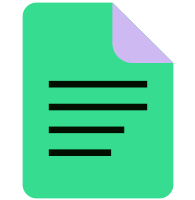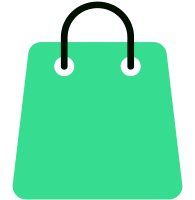In our last article, we reached the years around 450 BC in the Siberian and German regions of Europe where it seems that cannabis was found in burial grounds and tombs but not entirely any evidence of it’s medical usage in that area. In this article, we will continue through the rise of Cannabis’ popularity and medical history in India and the spread to the Middle East and Africa all the way up to the Americas.
Here the timeline is put very simply:
1000 AD: Treats EpilepsyArabic scholars al-Mayusi and al-Badri regard cannabis as an effective treatment for epilepsy.
1025 AD: AvicennaThe medieval Persian medical writer publishes “Avicenna’s Canon of Medicine”, stating that cannabis is an effective treatment for gout, edema, infectious wounds, and severe headaches. His work was widely studied from the 13th to 19th centuries, having a lasting impact on Western medicine.
1300 AD: Arab tradersArab traders bring cannabis from India to Eastern Africa, where it spreads inland. It is used to treat malaria, asthma, fever, and dysentery.
1500 AD: Spanish ConquestThe Spanish brought cannabis to the Americas, where it was used for more practical purposes like rope or clothes. However, years later, it would be used as a psychoactive and medicinal drug.
1798: NapoleonNapoleon brought cannabis back to France from Egypt, and it was investigated for its pain relieving and sedative qualities. At this time, cannabis would be used to treat tumors, cough, and jaundice.
If you’re interested in learning more- keep reading.
In the year 1000 A.D. Muslim texts mention the use of cannabis as a diuretic, digestive, anti-flatulent, ‘to clean the brain’, and to soothe pain of the ears. Around the turn of the millennium, the use of hashish (cannabis resin) began to spill over from the Persian world into the Arab world. Cannabis was allegedly introduced to Iraq in 1230 AD, during the reign of Caliph Al-Mustansir Bi’llah, by the entourage of Bahraini rulers visiting Iraq. Hashish was introduced to Egypt by “mystic Islamic travelers” from Syria sometime during the Ayyubid dynasty in the 12th century AD. Hashish consumption by Egyptian Sufis has been documented in the thirteenth century AD, and a unique type of cannabis referred to as Indian hemp was also documented during this time. Smoking did not become common in the Old World until after the introduction of tobacco, so up until the 1500s hashish in the Muslim world was consumed as an edible.
Cannabis is thought to have been introduced to Africa by early Arab or Indian Hindu travelers, which Bantu settlers subsequently introduced to southern Africa when they migrated southward. Linguistic studies provide evidence to prove the theory. Bhang, the traditional word for cannabis on Africa’s East coast, comes from Hindi. In Africa, the plant was used for snake bite, to facilitate childbirth, malaria, fever, blood poisoning, anthrax, asthma, and dysentery.
It was already in popular use in South Africa by the indigenous Khoisan and Bantu peoples prior to European settlement in the Cape in 1652. By the 1850s, Swahili traders had carried cannabis from the east coast of Africa, to the Congo Basin in the west. Cannabis has been south of the Congo River for only a few hundred years before the Europeans arrived.
In the Americas, the use of cannabis probably began in South America. In the 16th century, the plant’s seeds reached Brazil; brought by African slaves, especially those from Angola, and its use was considerably common among those in the Northeastern rural area. Most synonyms for cannabis in Brazil (maconha, diamba, liamba, and others) have their origin in the Angolan language. There are reports of the use of cannabis in that region’s popular religious rituals, especially the ‘Catimbó’, which includes cult to African deities and presumes the value of the plant for magical practice and treatment of diseases. In the rural environment, there are reports of the use of cannabis for toothache and menstrual cramps.
Starting about 1545, the Spaniards brought industrial hemp to the Western Hemisphere and cultivated it in Chile. In 1607, hemp was among the crops Gabriel Archer observed being cultivated by the natives at the main Powhatan village, where Richmond, Virginia is now situated; and in 1613, Samuell Argall reported wild hemp “better than that in England” growing along the shores of the upper Potomac. As early as 1619, the first Virginia House of Burgesses passed an Act requiring all planters in Virginia to sow “both English and Indian” hemp on their plantations.
During Napoléon Bonaparte’s invasion of Egypt in 1798, alcohol was not available per Egypt being an Islamic country. In lieu of alcohol, Bonaparte’s troops resorted to trying hashish, which they found to their liking. Following an 1836–1840 travel in North Africa and the Middle East, French physician Jacques-Joseph Moreau wrote on the psychological effects of cannabis use; Moreau was a member of Paris’ Club des Hashischins (founded in 1844).
In 1842, Irish physician William Brooke O’Shaughnessy, who had studied the drug while working as a medical officer in Bengal with the East India company, brought a quantity of cannabis with him on his return to Britain, provoking renewed interest in the West. Examples of classic literature of the period featuring cannabis include Les paradis artificiels (1860) by Charles Baudelaire and The Hasheesh Eater (1857) by Fitz Hugh Ludlow.
Next month we will go into the early American history of Cannabis all the way up to it’s prohibition- stay tuned to read more.
https://books.google.com/books?id=Pk-xCgAAQBAJ&pg=PA72#v=onepage&q&f=false
https://medicalmarijuana.procon.org/historical-timeline/
https://www.scielo.br/scielo.php?script=sci_arttext&pid=S1516-44462006000200015
https://www.scielo.br/scielo.php?pid=S1516-44462006000200015&script=sci_arttext



